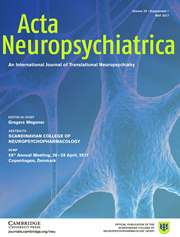Introduction:
Mirror illusion consist in the fact that, standing in front of a mirror put in a sagittal plane, with our head on one side and one arm stretched forward, we can see one side of our body reflected as if it were the other side, by mirror visual feedback.
The aim of this study was to monitor blood flow changes in medial cerebral artery (MCA) by means of Transcranial Doppler (TCD) in individuals during motor tasks as well as tasks using mirror visual feedback.
Subjects and methods:
Eight young healthy volunteers (four male and four female) participated in this study. TCD recording of MCA was done during each task consisting of various motor and visuo-motor activities using mirror illusion. Both MCA mean blow flow velocity (MBFV) were measured while individuals seated in a comfortable chair. The obtained MCA MBFV are presented as baseline values
Results:
During the illusion of motoric hand activation, when the subject is making right hand flexions and watching its reflexion in the mirror, while the left hand is immobile, increase of mean blood flow velocity of contralateral MCA was observed (task 3 + 4.5% than in baseline values, P = 0.017).
Furthermore, when the subject made left hand flexions while watching the reflection of the immobile right hand in the mirror, there was increase of MBFV in right MCA ( + 5.6% than in baseline values P = 0.044), more pronounced than during the illusion of motoric hand activation (task3) and less than during direct vision of hand flexion (task 2 + 6.3%than in baseline values P = 0.005).
Conclusion:
Our data showed that visual illusion of action, as well as direct action observation can increase mean blood flow value in MCA, which brings forward the possible usage of mirror illusion as a tool for motoric neurorehabilitation.
Key words:
Transcranial Doppler, mirror illusion, medial cerebral artery


